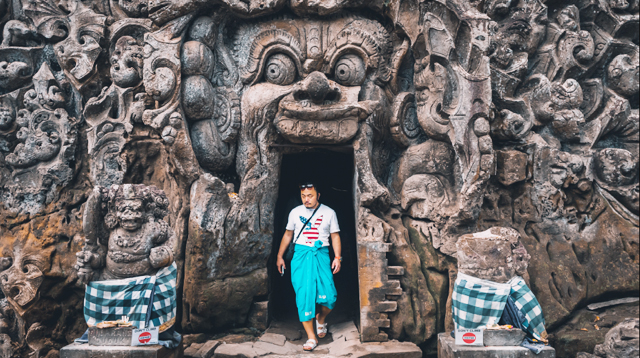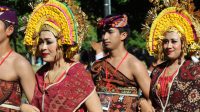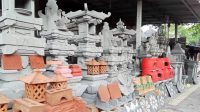- GOA Gajah was functioned as a place of worship, chiefly meditation in the niches located inside the cave
- Sivaism and Buddhism developed harmoniously as showed by their own complex at this historical heritage
Goa Gajah or literally means Elephant Cave located at Bedulu village, Blahbatuh, Gianyar, is one of Bali’s ancient sites made so artistic on a rocky cliff. In ancient time, this site was functioned as a place of worship. Approximately this site is located 27 km from Denpasar.
A Dutch East Indies official, LC Heyting, in 1923 reported the discovery of Ganesha statue, three lingams and Hariti statue to the Dutch East Indies government. The three objects then became the forerunner to the discovery of the Goa Gajah site. These findings were followed up by Dr. WF Stutterheim resumed with further research in 1925.
The Indonesian Archeological Service through archaeological building sections in Bali led by JL Krijgman conducted a research in 1950. During the period of 1954 to 1979, some excavations were carried out and they found an ancient bathing place in front of the Goa Gajah with 7 pieces of angel statues on lotus flower with a shower in the chest. This is based on the concept of Sapta Nadi, namely seven holy rivers in India, namely the Ganges, Sindhu, Sarasvati, Yamuna, Godawari, Serayu and Narmada. However, due to the earthquake a few years ago, one statue was damaged and had to be moved from that place.
Until now, the existence of the fountain is believed to provide an aura of purification for visitors. Local people believe that washing face here or rinsing mouths with the water coming out from the statue can make stay young.
Next, there are other heritages in the form of three-pronged stupas carved onto the stone wall lying at the bottom of Pangkung River, discovered in 1931 by Mr. Conrat Spies.
Research on ancient relics in the Goa Gajah received special attention as evidenced in 1951-1952 by excavations held in the front yard of the mouth of the cave following the opening of a building section office in 1950 by the Bali Branch Archaelogical Office of the Republic of Indonesia in Gianyar led by J.C. Krijgsman. The excavation found an ancient rectangular foundation, where the front wall of the cave serves as one of its long sides.
Goa Gajah Complex consists of two main parts, namely the northern complex is a legacy of Shivaite teachings, proven by the existence of the three lingams and Ganesha statues inside the cave as a place of worship of the Hindus. Meanwhile, the southern part of the complex is the Pangkung River area, having the ruins of Buddhist stupa. The stupa is in the form of 13-tiered umbrella and has three branches carved on large stone.
The northern part of the complex is a cave-temple known as Goa Gajah. This rock cave is carved and protrudes out as far as 5.75 meters from the wall, with a height of 6.75 meters and a width of 8.6 meters. The surface of the cave faces south, with giant ornaments and floral ornament in the form of foliage (patra) and fauna of monkeys and pigs.
Right in the middle of the relief, there is a cave mouth with a width of 1 meter and height of 2 meters. Above the mouth of the cave sits a giant’s face carving with large and round eyes glancing to the right; his hair and eyebrows look rough, big nose, upper lip with a row of teeth just above the cave hole.
When entering the cave, inside there is a T-shaped hallway, where a few meters to the north, there is a transverse corridor from west to east measuring 13.5 meters long, 2.75 meters wide and 2 meters high. Then on the north wall of the alley, there are seven niches, one of the which facing the cave entrance hall. This is the largest niche with a height of 1.26 meters, a depth of 1.35 meters and 0.7 meters above the ground. Inside there is Shiva statue. The two ends of the passageway also have recesses. At the east end, there is a trilingga and a niche to the west of the Ganesha statue.
An ancient statue depicting Hariti, Ganesha, and the giant can be foundi front of the cave. In Buddhist fable, this Hariti figure is known for her evil character and likes to prey on children. But after studying Buddhism, she turned into loving children. The Hariti statue is depicted with three children on the right and left and one on her lap. In the local Balinese fable, the Hariti is known as Men Brayut (Mom Brayut).
In the meantime, when stepping into the southern part of the complex located there is a valley known as Tukad Pangkung where statues of Buddha and ancient relics are found in the form of a large relief but they collapsed to the bottom of the valley. Possibly, this was one part of a cliff-temple.











